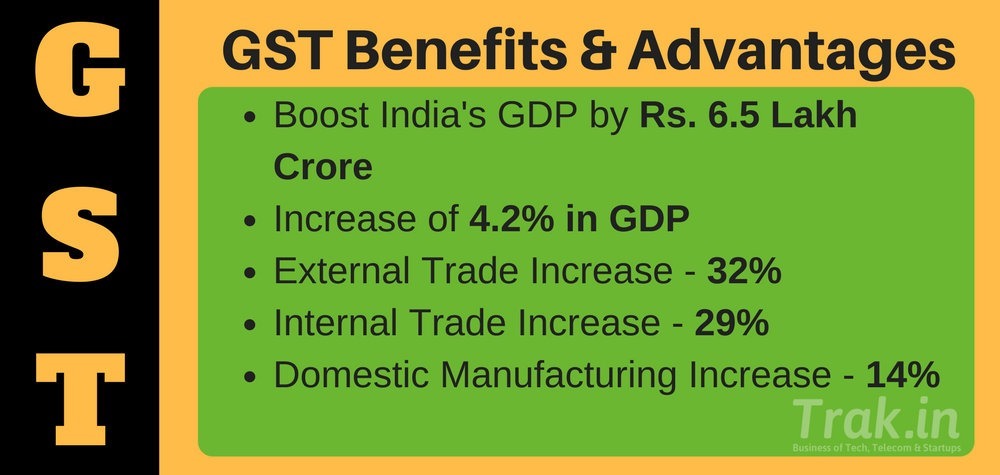US Central Bank Predicts GST Will Boost India’s GDP by Rs 6.5 Lakh Cr; But 70% of SMEs Still Not Prepared For GST

Federal Reserve System, which is US’s central banking system, has prepared a report according to which Goods and Services Tax (GST) regime will boost our GDP by 4.2%, which is Rs 6.5 lakh crore.
Note here, that Rs 6.5 lakh crore is more than what India borrows, per year, from International financial organisations.
In other words, Fed’s report suggests that India will no longer be required to borrow money if GST is implemented pan-India.
July 1st is the possible date of the rollout of GST, pan-India.
This research is part of Federal Reserve System’s series of International Financial Discussion Papers (IFDP), wherein researchers study and speculate major economic changes being introduced all over the world. The research paper was authored by Eva Van Leemput and Ellen A Wiencek.
How Will GST Boost Indian Economy
The research by Feb mainly highlights three factors, which will help to boost Indian economy:
– Manufacturing will increase under GST, as tax structure would be similar, all over India. Hence, either you manufacture in a state of Himachal Pradesh, where tax is low right now, or in Uttar Pradesh, where tax is high right now; under GST, the economic feasibility would be same, across the country. The report predicts an increase an increase of 14% in domestic manufacturing.
– Due to more foreign companies entering India, the domestic and international trade would increase, as quality improves, and the market expands. As per the report, external trade in India will increase by 32% under GST.
– As trade barriers are removed, internal trade will increase by 29%, which will have a cascading effect on the Indian economy
The report also mentions the fact that if more products are included in the upper tax slabs, then it can have a negative effect on the overall GST implementation, as commodities can become more expensive.
The report said, “We also find that the distribution of goods across tax rate tiers matters for the growth outlook. As more goods move to the upper tiers, the real GDP and manufacturing output gains would be dampened,”
Earlier, based on research by economic think tank NCAER, it was assumed that GST will boost our economy by 1-2%.
70% Of Indian SMEs Not Ready With GST
Meanwhile, as per Consulting firm KPMG and the Federation of Small Medium Enterprises (FISME), as much as 70% of small businesses and SMEs are still not ready for GST implementation.
Waman Parkhi, partner, indirect tax, KPMG said, “Not more than 30% of SMEs are ready for GST…the another problem is that till the final tax structure is decided, companies cannot fix the new prices for their goods. The entire exercise needs to be done hurriedly as it will have to be implemented from July 1,”
In order to help small businesses, Small Industries Development Bank of India (SIDBI along with FISME will soon launch a dedicated helpline as well.
As a variety of taxes such as excise duty, service tax and various state taxes such as sales tax, value-added tax, entertainment and purchase taxes are now clubbed with one single nationwide tax structure, a lot of business accounting changes need to be done. As per the report, while bigger firms can afford such manage scale changes, small companies are finding it difficult to adapt.
A senior Finance Ministry official has already said, “There could be some problems, we are aware, we are trying to ensure that the transition is as seamless as possible..”
If you are small business owner/SME, then do let us know what challenges are you facing while switching over to GST, by commenting right here.
